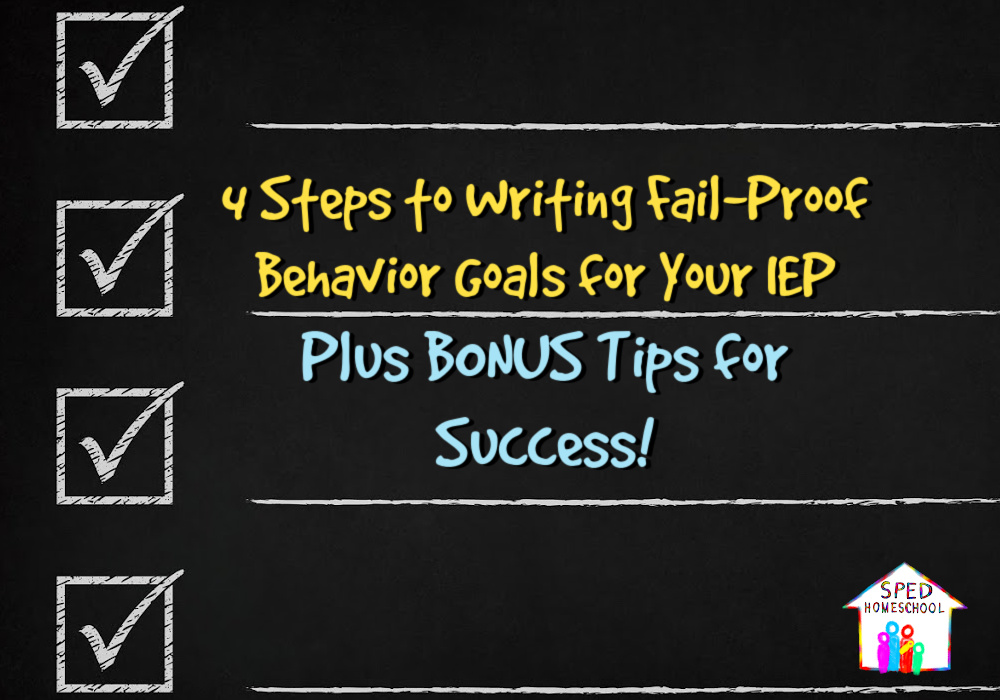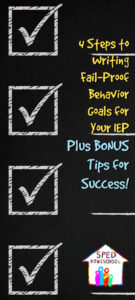
by Alicia Goodman, PhD, NCSP, SPED Homeschool Partner Simply Psychology, LLC
From the time children are born, they are interacting with others. As infants, they cry and coo as they discover how to get our attention. As toddlers, they are mobile and engage with others verbally to develop friendships. As tweens and teens, they are exerting their independence. By 18 years of age, a typical human will have approximately 78,840 interactions (information extrapolated from the 2018 study of Zhaoyang, R., Sliwinski, M, Martire, L. and Smyth, J). That’s a lot of behavior!
Behavior is “the way in which one acts or conducts oneself, especially toward others,” according to the Oxford Dictionary (2021). Meaning behavior can be positive or negative. In this article, the term behavior will refer specifically to unpleasant or unwanted behavior that impacts others. We want to start with an unwanted behavior and then consider the more appropriate behavior within a given set of circumstances.
Let’s meet Emma. Emma is eight years old. She goes to her grandmother’s house every Tuesday and Thursday morning and other times when her parents have other obligations. Emma clings to her parents at drop off and begs them to come inside the house. Emma loves her grandmother, and they like to play together and do crafts; however, she is not willfully separating from her parents at drop off.
I see many children who experience separation anxiety who “refuse” to physically separate from their parents. The word “refuse” is in quotes because we need to understand that it may be due to anxiety or lack of skills, but this is how others usually see the issue. Separation anxiety comes in all forms, including separating for school, playdates, going to a relative’s house, and bedtime.
STEP 1– The FIRST STEP is to objectively define WHAT the target behavior is that you want to see. You may want to write the goal as “Emma will stop clinging to me.” It is a common mistake to focus on the behavior that we want to stop. Instead, focus on what you want to happen. Also, “Emma will go into grandma’s house independently,” is slightly better than “Emma will separate from parents,” as it is more specific. This step can also include the WHO if someone else will be involved, which, in this case, is grandma. You can also add something like, “with one prompt from parent” or “without prompts from others.” Of course, there will be age-appropriate variations for this. For a 2- or 3-year-old, you are likely helping them with the car door and walking them to the door. Emma does not need this assistance. In this example, we will start the goal with, “Emma will independently exit the car and enter Grandma’s house with one prompt from a parent.”
STEP 2– Define WHEN the desired behavior needs to take place. When will your child separate? Think about how often drop off is. Do we want Emma to separate every time we are dropping off at grandma’s, even if there is no warning? Typically, anxious kids need a heads up, and, let’s assume, this is a goal that gets lots of practice. For this goal, let’s answer the WHEN. “On Tuesday and Thursday mornings or when given a one-hour warning, Emma will independently exit the car and enter grandma’s house with one prompt from a parent.” Looking great!! Your fail-proof goal is well on its way!
STEP 3 – Determine the baseline for the current behavior. How often is Emma already doing the desired behavior? Take some data to truly know. The easiest way to report assessment data for growth is out of a certain number of trials or a percentage. For example, currently, Emma is completing this goal in 2 out of 10 drop-offs (2/10 trials) or 20%.
STEP 4 – Decide on the percentage of success you want to consider the goal achieved. You can use objectives under the goal to set smaller targets. Or, set your goal at 50% and then write a new goal for 70%, 90%, etc. When you write your goal, you should also consider how you will be assessing the progress. “On Tuesday and Thursday mornings or when given a one-hour warning, Emma will independently exit the car and enter her grandma’s house with one prompt from a parent 75% of the time as measured by counting successes over a 2-week period.”
Behaviors are tricky. Behaviors are communication, a way of expression, and I urge you to understand what is behind the behavior. With appropriate intervention, addressing deficient skills, empathy, structure, and appropriate expectations, unwanted behaviors will melt away. That means that we often have the power to impact even the toughest of behaviors, not by forcing them to change, but by changing our approach and reaction/response. But sometimes unwanted behaviors persist, and behavior goals are necessary.
BONUS: Helping promote success
- Discuss and develop goals with your child and explain the purpose behind them. Having buy-in will help tremendously.
- Pre-teach expectations, role play, and model target behavior for your child.
- Identify and address any skill deficits that might be impeding success.
- Have your child take data on the goal. This is a great way for them to get involved and take some ownership.
- Break down the goals into manageable subgoals or objectives.
Find additional resources and workshops at www.simplypsychservices.com

